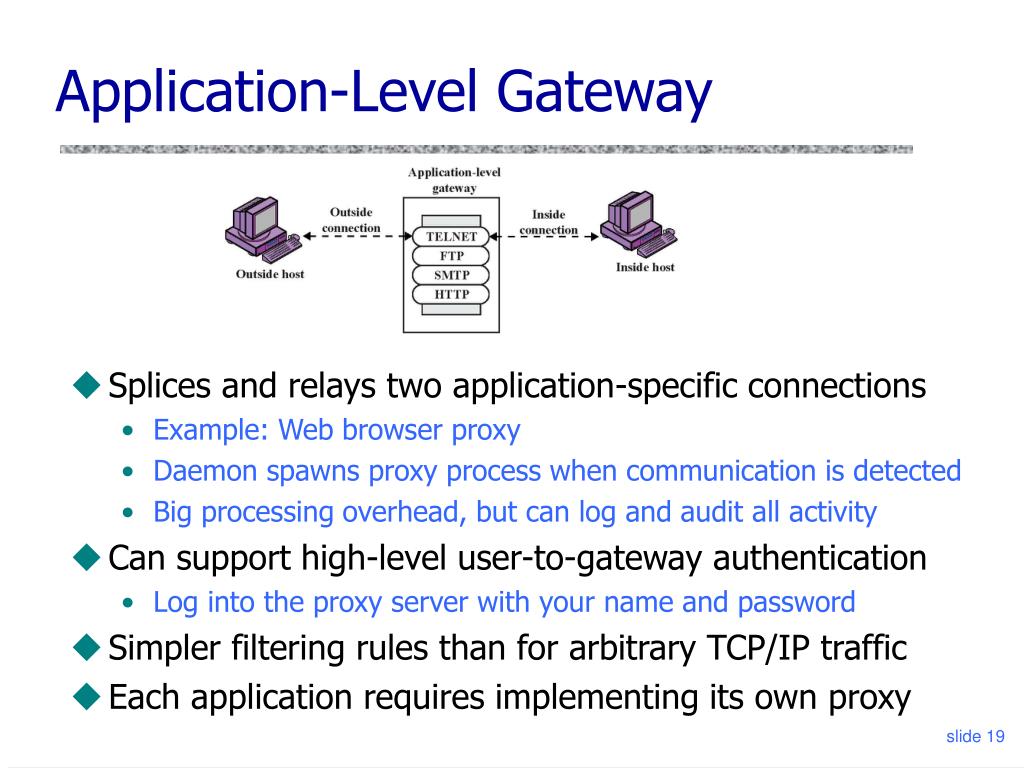

Here’s an example:Īpplication level gateways can allow firewall traversal with a session initiation protocol (SIP).

These tools are capable of understanding protocols used by the specific applications they support. The application gateway and external computer communicate without client information or knowledge of the proxy server IP address.Īpplication level gateways employ deep packet inspection to function. Application gateways are located on the client and server firewall.Īt a high level, the proxy server hides IP addresses (and other secure information) on a client’s behalf. When a client requests access to networked server resources (like web pages, databases, or files), the client connects first with the proxy server, which establishes a connection with the main server. How Application-Level Gateways WorkĪcting as a proxy for application servers and protocols like FTP, an application layer gateway uses deep packet inspection to detect and block malicious traffic before starting an application session or allowing traffic to pass through to applications. Application gateways filter incoming node traffic according to predetermined specifications - only filtering transmitted network application data such as file transfer protocol (FTP), telnet, real time streaming protocol and BitTorrent. An application level gateway, or application gateway, is a type of firewall proxy used for network security.


 0 kommentar(er)
0 kommentar(er)
